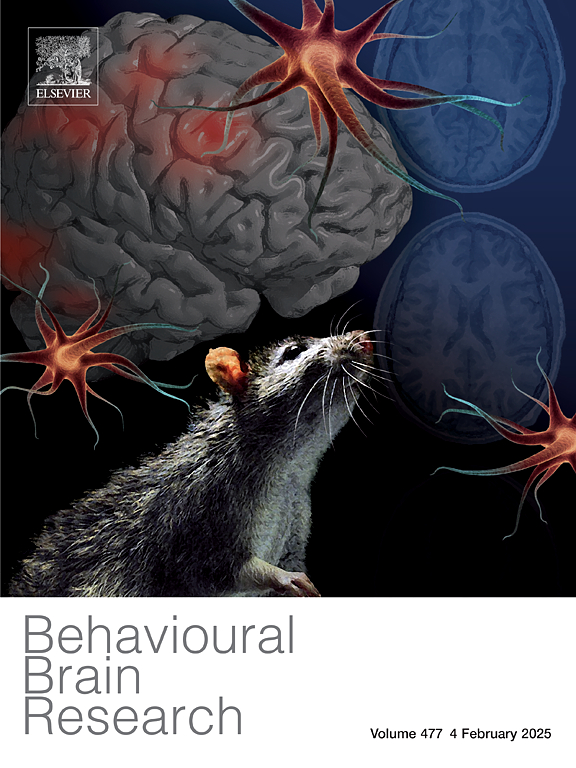利用CSP-TP特征融合增强脑机接口通信的基于脑电图的想象语音识别
IF 2.6
3区 心理学
Q2 BEHAVIORAL SCIENCES
引用次数: 0
摘要
背景:想象语音已经成为基于脑机接口(BCI)的通信系统的直观控制的一个有前途的范例,为严重脑残疾的个体提供了一种通信手段。在这项工作中,提出了一种基于无创脑电图(EEG)的自动想象语音识别模型,以帮助沟通传达个人的意图或命令。该方法采用公共空间模式(CSP)和时间模式(TP)进行特征提取,然后进行特征融合,同时捕捉脑电信号的时空动态特征。这种CSP和TP域的融合增强了提取特征的判别能力,从而提高了分类精度。新方法:收集15名受试者的脑电图数据集,同时执行一组更适合瘫痪患者的10个词的想象语音任务。对脑电信号进行预处理,从融合的CSP和TP域提取一组统计特征。对10个想象词的信号进行频谱分析,以识别脑电图的潜在模式。采用线性判别分析(LDA)、随机森林(RF)、支持向量机(SVM)和逻辑回归(LR)等机器学习模型进行两两和多类分类。结果:该模型的平均分类准确率分别为83.83%±5.94和64.58%±10.43,最大准确率分别为97.78%和79.22%。这些结果证明了CSP-TP特征融合方法的有效性,在想象语音识别中优于现有的最先进的方法。结论:研究结果表明,基于脑电图的自动想象语音识别(AISR)采用CSP和TP技术在基于bci的辅助技术中具有重要的应用潜力,为有严重沟通障碍的个体提供了一种更自然和直观的沟通方式。本文章由计算机程序翻译,如有差异,请以英文原文为准。
An EEG-based imagined speech recognition using CSP-TP feature fusion for enhanced BCI communication
Background:
Imagined speech has emerged as a promising paradigm for intuitive control of brain-computer interface (BCI)-based communication systems, providing a means of communication for individuals with severe brain disabilities. In this work, a non-invasive electroencephalogram (EEG)-based automated imagined speech recognition model was proposed to assist communication to convey the individual’s intentions or commands. The proposed approach uses Common Spatial Patterns (CSP) and Temporal Patterns (TP) for feature extraction, followed by feature fusion to capture both spatial and temporal dynamics in EEG signals. This fusion of the CSP and TP domains enhances the discriminative power of the extracted features, leading to improved classification accuracy.
New method:
An EEG data set was collected from 15 subjects while performing an imagined speech task with a set of ten words that are more suitable for paralyzed patients. The EEG signals were preprocessed and a set of statistical characteristics was extracted from the fused CSP and TP domains. Spectral analysis of the signals was performed with respect to ten imagined words to identify the underlying patterns in EEG. Machine learning models, including Linear Discriminant Analysis (LDA), Random Forest (RF), Support Vector Machine (SVM), and Logistic Regression (LR), were employed for pairwise and multiclass classification.
Results:
The proposed model achieved average classification accuracies of 83.83% 5.94 and 64.58% 10.43 and maximum accuracies of 97.78% and 79.22% for pairwise and multiclass classification, respectively. These results demonstrate the effectiveness of the CSP-TP feature fusion approach, outperforming existing state-of-the-art methods in imagined speech recognition.
Conclusion:
The findings suggest that EEG-based automatic imagined speech recognition (AISR) using CSP and TP techniques has significant potential for use in BCI-based assistive technologies, offering a more natural and intuitive means of communication for individuals with severe communication limitations.
求助全文
通过发布文献求助,成功后即可免费获取论文全文。
去求助
来源期刊

Behavioural Brain Research
医学-行为科学
CiteScore
5.60
自引率
0.00%
发文量
383
审稿时长
61 days
期刊介绍:
Behavioural Brain Research is an international, interdisciplinary journal dedicated to the publication of articles in the field of behavioural neuroscience, broadly defined. Contributions from the entire range of disciplines that comprise the neurosciences, behavioural sciences or cognitive sciences are appropriate, as long as the goal is to delineate the neural mechanisms underlying behaviour. Thus, studies may range from neurophysiological, neuroanatomical, neurochemical or neuropharmacological analysis of brain-behaviour relations, including the use of molecular genetic or behavioural genetic approaches, to studies that involve the use of brain imaging techniques, to neuroethological studies. Reports of original research, of major methodological advances, or of novel conceptual approaches are all encouraged. The journal will also consider critical reviews on selected topics.
 求助内容:
求助内容: 应助结果提醒方式:
应助结果提醒方式:


